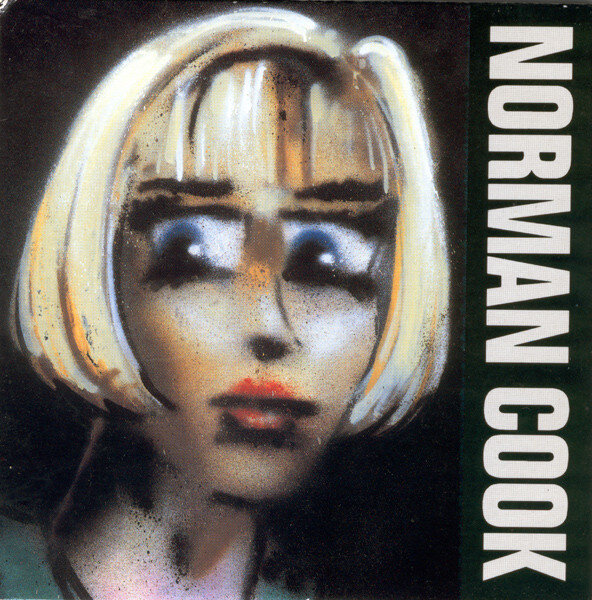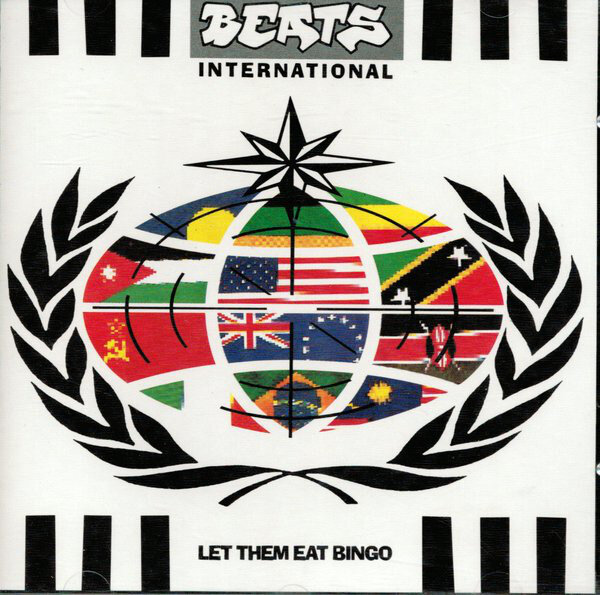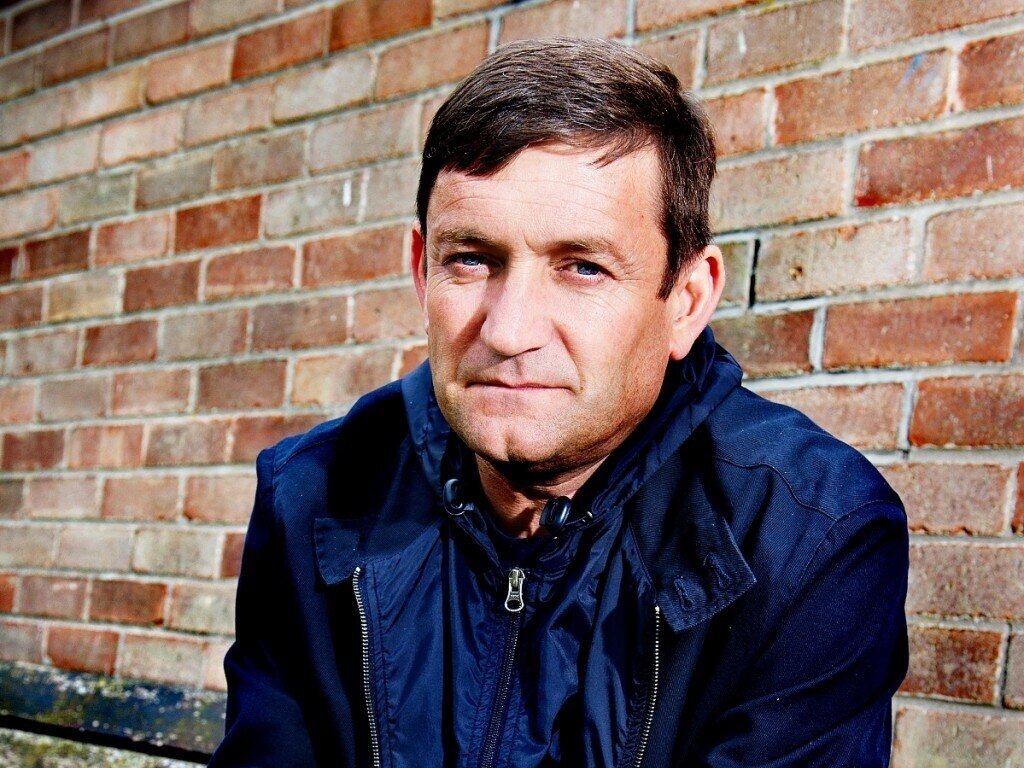The World's On Fire: A Retrospective on The Housemartins and beyond
Click below on the streaming service of your choice to listen to the playlist as you read along.
The Housemartins
In the mid-1980s in the UK synth music and new wave waned in popularity as R&B continued its chart dominance and guitar-driven rock started to reassert itself. There was a return in appeal for the more traditional guitar, bass, and drums of the earlier rock eras, giving rise to bands playing a jangly, infectious form of pop music, not the least of which was The Smiths from Manchester. On the opposite coast in Hull, a new band issued their first single in 1985 with a similar mix of biting, social and political commentary juxtaposed with a bright pop sound. In their short time, The Housemartins would become one of the top pop acts in the UK.
The Housemartins, first edition: Hugh Whitaker, Stan Cullimore, Paul Heaton, and Norman Cook
Formed in 1984 by singer Paul Heaton and guitarist Stan Cullimore, who had been playing together in a couple prior incarnations, The Housemartins (assumed to be named after the bird, the House Martin) came together when Norman Cook joined on bass and Hugh Whitaker settled in on drums. They signed to indie label, Go! Discs and released their first single, “Flag Day.” Two more singles followed in 1986, “Sheep” and “Happy Hour” before their debut LP, London 0 Hull 4, was issued in October 1986. Thanks to exposure from recordings with John Peel, “Happy Hour” caught on and reached #3 in the UK singles chart. This success pushed the album to the same spot in the UK album chart, putting The Housemartins at the front edge of the new pop sound.
The album’s title reflected the band’s sense of humour, fashioned as an unlikely football score since Hull’s team was in a low state in the fourth division and there was no ‘London’ team in pro football, with most of the clubs from the city competing in the premier division. The use of ‘4’ was also a reference to the band’s joke that they were the fourth best band from Hull. The band’s religious, political, and class identities, spearheaded by Heaton, were listed on the back of the album, “Take Jesus – Take Marx – Take Hope.” However, if you were to ignore the lyrics, the album’s fantastic array of tightly crafted, hook-filled pop songs, written primarily by Heaton and Cullimore, made for a toe-tappin’, head-noddin’ romp. Driven by excellent melodies, the band harnessed the classic sounds of ‘60s pop and delivered it with a modern edge.
The lyrics, however, could not be ignored, not just for their content but especially when delivered by the band’s signature element – the idiosyncratic vocals of Paul Heaton – which set the band’s sound apart. Lyrically, he carried in the tradition of the punks and post-punks, decrying the class problems of Thatcher-era Britain – none more so plainly than in, “Get Up Off Your Knees:” “Paupers will be paupers, bankers will be bankers / Some own pennies in a jar, some own oil tankers / What may sound like tomorrow could be ours today / There's no more need for sorrow if we get off our knees to pray.”
Releasing the next single before the end of the year, The Housemartins’ a cappella version of the song, “Caravan of Love” (released just the year before by Isley Brothers splinter group, Isley-Jasper-Isley), went to #1 in the UK, helping land the band the BPI Award for Best Newcomers. They then underwent a line-up change when Whitaker left and was replaced with his former schoolmate, Dave Hemingway, on drums.
The Housemartins, second edition: Dave Hemingway, Norman Cook, Stan Cullimore, and Paul Heaton
Success continued unabated in May 1987 with the single, “Five Get Over Excited,” and then in August with, “Me and the Farmer,” both of which cracked the UK top twenty. In September, their second album, The People Who Grinned Themselves to Death, was released, which delivered them another UK top ten LP. A third top twenty single, “Build,” was issued in November to conclude an excellent two year run for the band.
The People Who Grinned Themselves to Death was one of the best modern rock albums of the late ‘80s and was again an impeccable collection of smartly crafted pop songs. Generally light in sound and mood, it did have some rock energy with the likes of, “The World’s on Fire,” which also had an impressive high note from Paul, along with moodier, subtler moments such as the lovely, slightly jazzy, “Johannesburg.” Overall, the album’s jaunty melodies and hook-filled tunes, one after another, made it irrepressible and, once again, an offset to the caustic lyrics. The album’s title track was a reference to monarchists, those loyal to Britain’s royal family while ignoring the ails and poverty of the country’s working class: “The people who grinned themselves to death / Smiled so much they failed to take a breath / And even when their kids were starving / They all thought the queen was charming.” On this album Heaton’s distinctive vocals were balanced with lead vocal contributions from their new drummer, Dave Hemingway.
After releasing another top-forty single in April 1988, “There Is Always Something There to Remind Me,” an attack on the British school system (always a popular topic among Brit rockers), The Housemartins announced their break-up. For a band riding so highly it was surprising news, and while they cited their original intent was always to be a short project, the truth eventually came out that musical differences were at the heart of it. Heaton wanted to shift more into jazz-pop. Cook wanted to explore the burgeoning club music scene. The band amicably parted and these musical differences became starkly apparent in the acts created out of The Housemartins’ ashes.
In just a three-year recording career, The Housemartins achieved two top ten albums, two top ten singles including a #1, and four additional top twenty singles. All that success was only in the UK, with the albums only cracking the lowest levels of the top 200 in the US and none of the singles making a mark at all. In Canada, where British music received more exposure, both albums reached about halfway up the top 100. My local alternative radio station, CFNY, placed The People Who Grinned Themselves to Death at a respectable #15 in their ‘Best 87 of ‘87’ countdown. It was an impressive legacy for such a short tenure, even if their success was mostly contained to their homeland.
The Beautiful South
Guitarist Stan Cullimore left music, getting married in 1988 and first running a grocery shop before going on to be a prolific author of children’s books. He eventually returned to music as a writer of songs for children’s television shows, including the 2010 series, The Bopps. He has also turned to journalism in recent years.
Heaton and Hemingway joined with The Housemartins’ roadie, Sean Welch (on bass) to form a new band, The Beautiful South, named by the irascible northerners as a sarcastic cut. Hemingway shifted roles to create a lead vocal duo with Heaton and was replaced on drums by Dave Stead. Also joining was Dave Rotheray, a guitarist who replaced Stan Cullimore as Heaton’s new song writing partner. The quintet headed into the studio and were bolstered by a variety of additional musicians including vocalist, Briana Corrigan.
Released in October 1989, the debut LP, Welcome to the Beautiful South, was a continuation of The Housemartins’ vibe but with subtle turns stylistically more into a smoother, melodic, pop groove. The political and slashing observations of Heaton’s lyrics sustained into the new act. Success immediately came with the lovely, piano-flavoured first single, “Song for Whoever,” which reached #2 in the UK singles chart. The album wasn’t quite as exciting and engaging as The Housemartins, but there was no denying the sophistication and quality of the songs. Mixing jazz flourishes and generally more downbeat tempos the melodies were fantastic and every song had a treat for the ear, often livened with horns. Two more singles followed, “You Keep It All In,” which hit the UK top ten, and “I’ll Sail this Ship Alone,” which reached the top forty. The album peaked at #2 in the UK albums chart, surpassing The Housemartins’ best chart peak, helping The Beautiful South establish itself in its own right.
The next album was Choke, released in October 1990. Not as strong an LP as the debut, it nonetheless contained many gems among its songs. The album equalled the debut’s peak of #2 in the UK charts and released three singles, though only one, “A Little Time,” did well – very well – reaching #1 in the UK singles chart. It was sung as a duet between Hemingway and Briana Corrigan, who this time was credited as a full band member. On this LP the jazz feel was much greater, creating a looser feel through the songs.
1992 saw the band’s third release, 0898 Beautiful South. It shifted away from the lighter, jazzier accents and took a more straightforward pop approach with heartier R&B elements. However, the album lacked the depth of hooks of the first two LPs and didn’t quite match their success. Four singles were released with two hitting the top forty and one, “Bell Bottomed Tear,” reaching the top twenty. The album peaked at #4.
The Beautiful South continued to be mostly overlooked in North America, same as The Housemartins had been. “We Are Each Other,” the album’s second single, reached #10 in the US Modern Rock chart, marking what would be the best achievement stateside in the band’s career. “You Keep It All In” from the first LP had reached the top twenty in the same chart in 1989, but otherwise the band would never achieve any break-through success in the US and fared only marginally better in Canada. They soon after stopped releasing their albums in the US.
The Beautiful South in 1990: Dave Stead, Paul Heaton, Dave Rotheray, Briana Corrigan, Dave Hemingway, and Sean Welch
After the first three solid LPs, The Beautiful South released seven more before breaking up in 2007. Five of those albums reached the top ten with the other two reaching the top twenty in the UK, making them a hugely successful act in their home country. The 1994 greatest hits album, Carry On Up the Charts, reached #1 and went 6x platinum to be one of the UK’s biggest selling albums ever. They did it again with 2001’s Solid Bronze, another hits package that went double platinum and cracked the top ten. The band’s sound was quite consistent in quality and style through their career.
After the third album, Briana Corrigan left to pursue a solo career and was subsequently replaced Jacqui Abbot, who performed on the band’s next four albums before being replaced with Alison Wheeler. The female dynamic against the male duo was a key element of The Beautiful South’s sound, creating opposing sounds and lyrical perspectives. Though one reason for Corrigan’s departure was a complaint about the band’s handling of the female perspective in their songs, most notably in the song, “36D,” which took aim at the women of the fashion industry as opposed to the exploitation of the industry itself.
It’s a striking dynamic that The Housemartins and The Beautiful South were very successful acts in their home country but couldn’t catch a whiff of success abroad. Perhaps it was the politics and social commentary of the lyrics, or maybe a lack of strong representation and an ability to be championed within the North American labels and radio, but for whatever the reason both bands were strongly overlooked in those markets.
Norman Cook
Norman Cook
The last remaining Housemartin, bassist Norman Cook, fared better in building an international audience. Moving back to Brighton where he’d lived before moving to Hull to join the band, he turned towards the studio and the turntables, becoming a DJ, mixer, and producer. He has enjoyed an enduring and remarkable career in dance music.
Cook’s first project after parting ways with The Housemartins was a joint effort with MC Wildski, enjoying some UK chart success with the 1989 single, “Blame It on the Bassline.” The pair were then joined by a loose collection of vocalists, rappers, and musicians to form the act, Beats International. The band released two albums over 1990 and 1991, with the first LP, Let them Eat Bingo, reaching the UK top twenty. Its success was driven by the #1 single, “Dub Be Good to Me.” The second LP did less well, and the collective was disbanded.
Cook then formed Freak Power with trombonist, Ashley Slater, and singer, Jesse Graham, performing beat driven jazz and funk. This act released two LPs in 1994 and 1996, with the first, Drive-Thru Booty, reaching #11 in the UK album chart. They also had two top forty singles, including the top ten, “Turn On, Tune In, Cop Out.” “Rush’ was their second single, but it only reached #62 in the singles chart. During this Cook also worked on a house music act, Pizzaman, that enjoyed three top forty UK hits. It was clear Cook had a knack for smartly combining beats, samples, and a variety of musical styles to create an emerging, catchy, and highly danceable sound. He was at the forefront of the new DJ and club-driven culture that arose over the late ‘80s and early ‘90s.
So, in 1996 when Cook went solo, taking the stage name, Fatboy Slim, it was no surprise that he found success. Broader audiences were ready for the club sounds outside of the UK and the mainland European countries. Success wasn’t immediate though, as his first LP, Better Living Through Chemistry, didn’t chart too highly and neither did its singles, with “Going Out of My Head” doing the best with a #57 chart placement.
In the summer of 1998, Fatboy Slim released his next single, “The Rockafeller Skank,” which reached the UK top ten and cracked the US top 100. With its iconic, sampled lyric, “Right about now, the funk soul brother / Check it out now, the funk soul brother,” it drew interest from fans of soul, hip hop, electronica, house music, and alternative rock. It pushed club music to the fore as part of a late ‘90s surge in such music along with The Chemical Brothers and The Prodigy.
You’ve Come A Long Way, Baby was released with different covers in the UK (left/top) and North America (right/bottom).
That breakthrough single was the first to be released from the second album, released in October 1998. You’ve Come A Long Way, Baby went on to issue three more top ten UK singles, with “Praise You” also reaching the top forty in the US. “Gangster Trippin’” and “Right Here Right Now” were the other hits, though the rest of the album was just as strong. The LP hit #1 in the UK and reached the top forty in the US. I was one of the alternative rock fans won over to this club sound, buying into the R&B grooves with the hard beats. This was a highly played album for me over those years and it was hard to believe it was coming from a former Housemartin.
Fatboy Slim has since issued two more LPs, Halfway Between the Gutter and the Stars in 2000 and Palookaville in 2004, with the first reaching the UK top ten and the second the top twenty. They were not as successful in the US as the second LP had been as the alternative crowd’s brief dalliance with club beats had ebbed. The albums had three more top twenty UK singles.
Since then Fatboy Slim has primarily worked with others both collaborating as a writer/performer and also as a producer and mixer and has toured as a DJ playing to massive crowds, especially for his hometown gigs, the Brighton Beach Boutique shows. Cook took a break from his best-known stage name from 2006 to 2013 to work with David Byrne and Dizzee Rascal as The Brighton Port Authority. In addition to a single, “He’s Frank (Slight Return),” Cook and Byrne also did the soundtrack to the film, Here Lies Love, in 2010. The soundtrack’s twenty-two tracks featured a wide range of celebrity guest vocalists.
Norman Cook chose to go a different musical path than his originating band yet proved to be as successful in his style than his former bandmates were with The Beautiful South, though to a lower volume of output. It’s been an intriguing aspect to The Housemartin’s legacy that it spawned two such differently sounding, successful acts.
Paul Heaton
Paul Heaton
The Beautiful South, with the feeling the band had run its course, closed up shop early in 2007. Paul Heaton had already released a solo album and singles in 2001 under the alias, Biscuit Boy (a.k.a. Crackerman). Since 2008 he has released seven more solo LPs, the last four accompanied with ex-The Beautiful South singer, Jacqui Abbott. 2011’s release, The 8th, was a recording of material written and performed for that year’s Manchester International Festival. His and Abbot’s most recent album, Manchester Calling, was issued this year. The video for “A Good Day is Hard to Find” was shot in a typically, pandemic-driven, creative and spontaneous style. Heaton’s solo material has continued to explore variations of the sounds established through The Housemartins and The Beautiful South, providing consistent content to his devoted fan base.
Dave Hemingway and Dave Rotheray also released solo material during and after The Beautiful South’s time. Hemingway’s 2012 LP, Sweet Refrains, was released under the band name, The South, and included Alison Wheeler, who was The Beautiful South’s final female vocalist over the band’s final three albums.
The Housemartins shone briefly and brightly with an infectious, unique, friendly pop sound that obscured the edgy, political bent of the lyrics. The band spawned a legacy of acts that became some of the most popular British artists of the 1990s despite operating in very different genres. Yet aside from a few singles, most of this music has been overlooked in North America except for a small but enthusiastic fanbase among the alt-rock, college, and dance radio stations. Regardless, nothing can be taken away from the consistency and quality of the songs over these marvelous careers.
The Playlist - song \ album \ artist (year)
*Not available on Spotify in Canada
The Housemartins
Flag Day \ London 0 Hull 4 \ The Housemartins (1985)
Happy Hour \ London 0 Hull 4 \ The Housemartins (1986)
Get Up Off Our Knees* \ London 0 Hull 4 \ The Housemartins (1986)
Anxious* \ London 0 Hull 4 \ The Housemartins (1986)
Sheep* \ London 0 Hull 4 \ The Housemartins (1986)
The People Who Grinned Themselves to Death \ The People Who Grinned Themselves to Death \ The Housemartins (1987)
I Can’t Put My Finger on It \ The People Who Grinned Themselves to Death \ The Housemartins (1987)
The World’s on Fire \ The People Who Grinned Themselves to Death \ The Housemartins (1987)
Me and the Farmer \ The People Who Grinned Themselves to Death \ The Housemartins (1987)
Bow Down \ The People Who Grinned Themselves to Death \ The Housemartins (1987)
The Beautiful South
Song for Whoever \ Welcome to the Beautiful South \ The Beautiful South (1989)
From Under the Covers \ Welcome to the Beautiful South \ The Beautiful South (1989)
Love Is… \ Welcome to the Beautiful South \ The Beautiful South (1989)
My Book \ Choke \ The Beautiful South (1989)
I Think the Answer’s Yes \ Choke \ The Beautiful South (1989)
A Little Time \ Choke \ The Beautiful South (1989)
Old Red Eyes is Back \ 0898 Beautiful South \ The Beautiful South (1992)
36D \ 0898 Beautiful South \ The Beautiful South (1992)
Here It Is Again \ 0898 Beautiful South \ The Beautiful South (1992)
Norman Cook
Dub Be Good to Me* \ Let Them Eat Bingo \ Beats International (1990)
Rush \ Drive-Thru Booty \ Freak Power \ 1994
Happiness \ Pizzamania \ Pizzaman (1995)
Going Out of My Head \ Better Living Through Chemistry \ Fatboy Slim (1996)
The Rockafeller Skank \ You’ve Come A Long Way Baby \ Fatboy Slim (1998)
Paul Heaton
The Austerity of Love \ Wisdom, Laughter and Lines \ Paul Heaton and Jacqui Abbott (2015)
A Good Day is Hard to Find \ non-album single \ Paul Heaton and Jacqui Abbott (2020)






















